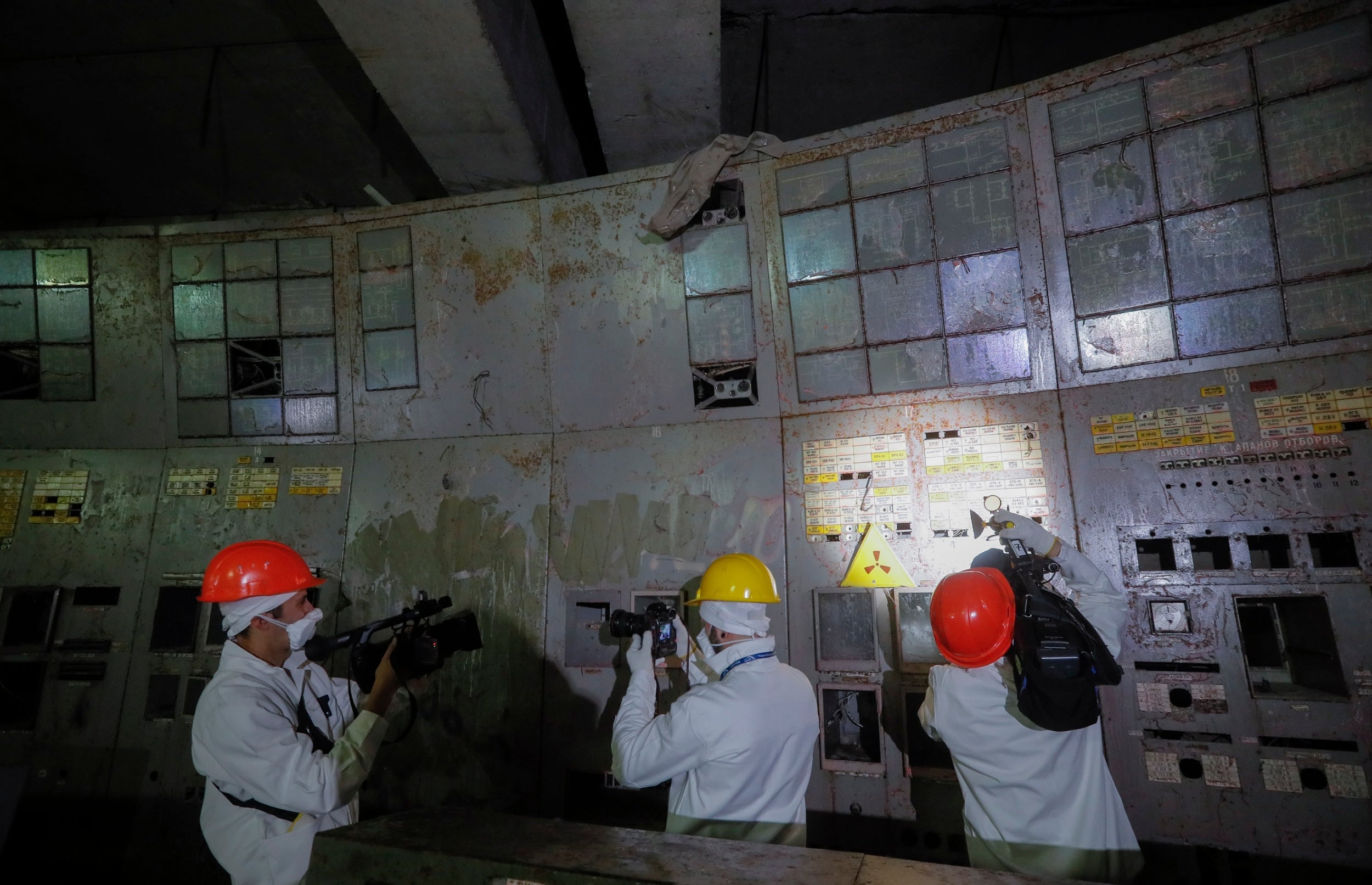Chernobyl’s reactor four control room opens to tourists
Estimated 200 tonnes of radioactive fuel remain inside

Your support helps us to tell the story
From reproductive rights to climate change to Big Tech, The Independent is on the ground when the story is developing. Whether it's investigating the financials of Elon Musk's pro-Trump PAC or producing our latest documentary, 'The A Word', which shines a light on the American women fighting for reproductive rights, we know how important it is to parse out the facts from the messaging.
At such a critical moment in US history, we need reporters on the ground. Your donation allows us to keep sending journalists to speak to both sides of the story.
The Independent is trusted by Americans across the entire political spectrum. And unlike many other quality news outlets, we choose not to lock Americans out of our reporting and analysis with paywalls. We believe quality journalism should be available to everyone, paid for by those who can afford it.
Your support makes all the difference.The control room of Chernobyl’s reactor four, the site of the world’s most devastating nuclear catastrophe, is to open to tourists.
The Ukrainian government is throwing open the doors of the facility to the public for the first time, as part of a bigger overhaul to make the disaster zone more tourist-friendly.
Efforts announced by President Volodymyr Zelensky in July include new walking trails and waterways, improved mobile phone reception and the lifting of filming restrictions.
The former nuclear power plant’s control room is where engineers shut down the reactor’s cooling pumps as part of a safety test in April 1986, which led to an explosion that killed at least 28 people in the immediate aftermath and contaminated the surrounding area.
Before the recent commitment to re-imagining the site as a tourist attraction, visitors could only view the power plant from the outside, as well as visit the eerily deserted town of Pripyat and its dilapidated buildings and never-used Ferris wheel.
All of the town’s 50,000 inhabitants were evacuated after the accident, leaving it a ghost town.
However, journalists got a first-look at the control room as part of the launch of 21 new tourist routes.
The room, located under a 36,000-tonne steel containment arch, still has its original display screens and panels of command buttons.
Visitors are only permitted to be in there for a few minutes to prevent overexposure to radiation; respirators, helmets and protective clothing are all provided for those brave enough to venture inside.
An estimated 200 tonnes of radioactive fuel remain contained inside the plant.
However, this is unlikely to put people off based on recent visitor growth.
Tourist numbers, already on the up, were given an extra boost by the popular HBO series, Chernobyl, which was released in May. More than 87,000 people have visited Chernobyl so far this year, up from 72,000 in 2018.

“Chernobyl has been a negative part of Ukraine’s brand,” President Zelensky has said previously. “The time has come to change this.
“We will create a green corridor for tourists. Chernobyl is a unique place on the planet where nature was reborn after a huge man-made disaster.”
He added: “We have to show this place to the world: to scientists, ecologists, historians and tourists.”
Join our commenting forum
Join thought-provoking conversations, follow other Independent readers and see their replies
Comments